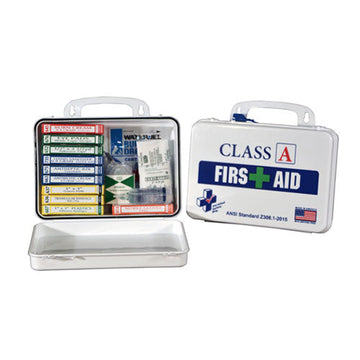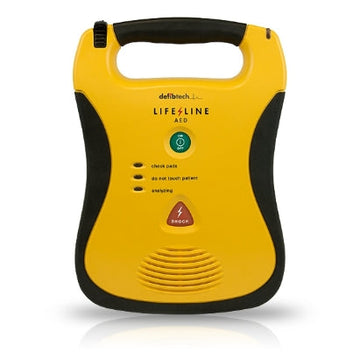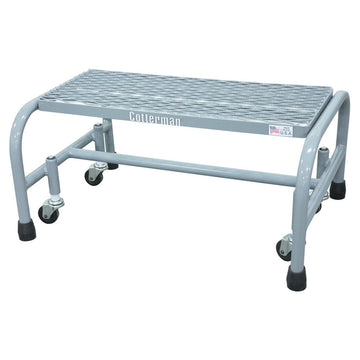Safety training includes educational programs that teach employees about workplace dangers and how to stay safe. The goal is to give workers the knowledge and skills they need to do their jobs safely, reducing the chances of accidents and injuries.
Why Safety Training Matters
Safety training is extremely important for several reasons:
● Creating a Safe Work Environment: Safety training helps prevent accidents and injuries by teaching employees how to recognize and avoid potential hazards. This proactive approach ensures that the workplace remains safe for everyone.
● Boosting Employee Confidence: When employees are well-trained in safety protocols, they feel more secure in their abilities to handle emergencies. This confidence not only improves their performance but also contributes to a positive work atmosphere.
● Preparing for Emergencies: Understanding potential dangers and knowing how to respond effectively can make a significant difference during emergency situations. Safety training equips workers with the skills needed to react calmly and appropriately, minimizing the impact of such incidents.
Legal Requirements for Safety Training
Another crucial reason why safety training is essential is legal compliance. Many regulations require organizations to provide adequate safety education to their employees.
For example, in the United States, the Occupational Safety and Health Administration (OSHA) has specific safety standards that employers must follow. Failing to comply with these regulations can result in severe consequences, such as hefty fines and legal actions.
By implementing comprehensive safety training programs, companies not only protect their employees but also fulfill their legal obligations.
Building a Culture of Safety
In addition to the immediate benefits of preventing accidents and complying with regulations, safety training also plays a vital role in fostering a culture of safety within an organization.
When employees see that their employer prioritizes safety through regular training sessions and initiatives, it sends a powerful message. It shows that the company values its workforce and is committed to creating a secure working environment.
This cultural shift can have far-reaching effects. Employees are more likely to take ownership of their own safety practices, speak up about potential hazards, and actively participate in safety discussions. Ultimately, this collective effort leads to a safer workplace for everyone involved.
1. Enhances Employee Well-Being
Employee well-being is a critical aspect of a thriving workplace. Safety training plays a pivotal role in minimizing accidents and injuries, thereby significantly reducing the risk of harm to employees. When workers are educated about potential hazards and the correct procedures to mitigate these risks, the frequency of workplace incidents diminishes.
Creating a culture of safety within an organization is essential for fostering an environment where employees feel secure. This culture encourages vigilance and proactive behavior when it comes to identifying and addressing safety concerns. It is not just about adhering to rules; it's about instilling a mindset where safety becomes a shared responsibility among all staff members.
The impact on employee morale and job satisfaction cannot be overstated. When employees perceive that their well-being is a priority, it enhances their overall satisfaction and loyalty to the company. A safe work environment reduces anxiety, allowing employees to focus better on their tasks, which in turn boosts productivity. Engaged employees who feel safe are more likely to contribute positively and remain committed to their roles.
Investing in safety training demonstrates that an organization values its workforce, leading to higher levels of motivation and engagement. This holistic approach ensures that both the physical and psychological well-being of employees are safeguarded, cultivating a more resilient and productive workforce.
2. Legal Compliance and Risk Management
Adhering to legal requirements for safety training is essential for any organization. The Health and Safety at Work Act 1974 mandates that employers provide adequate training to ensure the safety and health of their workers. Compliance with regulations like these is not just a legal obligation but a foundational aspect of creating a safe workplace.
Consequences of Non-Compliance
Consequences of non-compliance can be severe:
● Fines: Organizations found in breach of safety regulations may face substantial financial penalties.
● Lawsuits: Injuries or accidents resulting from inadequate safety measures can lead to costly legal battles.
● Reputation Damage: Non-compliance can tarnish a company's reputation, affecting employee morale and customer trust.
Role of Effective Safety Training in Risk Management
Effective safety training plays a crucial role in risk management strategies. By educating employees on potential hazards and proper safety protocols, organizations can:
1. Minimize the likelihood of accidents and injuries.
2. Reduce operational disruptions caused by workplace incidents.
3. Lower insurance premiums by demonstrating a commitment to safety.
Incorporating robust safety training programs helps mitigate risks while fostering an environment where employees feel valued and protected. This proactive approach not only ensures compliance with regulations but also enhances overall organizational resilience.
3. Boosts Productivity and Efficiency
Productivity and efficiency in the workplace are significantly enhanced through comprehensive safety training programs. Studies indicate that companies implementing effective training programs can experience up to an 11% increase in profitability. This statistic underscores the direct correlation between safety training and improved business outcomes.
How Effective Safety Protocols Streamline Workflows
Implementing effective safety protocols is crucial for streamlining workflows. For instance:
● Reduction in Downtime: With fewer workplace accidents, there is less disruption, allowing employees to maintain a steady workflow.
● Optimized Processes: Safety training educates employees on best practices, reducing errors and inefficiencies.
Importance of Hazard Identification
Identifying hazards plays a pivotal role in enhancing operational efficiency. By recognizing potential risks:
● Proactive Measures: Employees can take preventive actions, ensuring minor issues do not escalate into significant problems.
● Resource Allocation: Proper identification allows for better allocation of resources to address specific hazards, optimizing overall productivity.
Effective safety training not only fosters a safer work environment but also leads to streamlined operations, ultimately contributing to increased productivity and efficiency.
4. Financial Benefits of Safety Training
Investing in work safety training provides significant financial advantages, with studies indicating that for every dollar invested in safety training, organizations can save between $4 to $6. This cost savings stem from a reduction in workplace accidents and injuries, which directly lowers expenses related to medical costs, legal fees, and compensation claims.
Long-term benefits include:
● Reduced insurance premiums: Insurance companies often offer lower premiums to organizations with robust safety training programs due to the decreased risk of accidents.
● Lower turnover rates: A safe working environment fosters employee satisfaction and loyalty, reducing the costs associated with hiring and training new staff.
Case studies exemplifying financial gains:
A manufacturing company implemented a comprehensive safety training program, resulting in a 50% decrease in workplace accidents within a year. This not only saved on immediate medical and legal costs but also led to a 15% reduction in their insurance premiums.
A construction firm reported saving over $200,000 annually after introducing targeted safety training sessions. These savings were attributed to fewer project delays caused by accidents and a notable drop in workers' compensation claims.
The benefits of safety training are clear from significant cost savings due to reduced accidents to long-term financial stability through lower insurance premiums and improved employee retention.
5. Effective Training Methods for Workplace Safety
Setting Clear Learning Objectives
Effective safety training begins with well-defined learning objectives. These objectives guide the training process, ensuring that all critical areas are covered comprehensively. Clearly articulated goals help employees understand what they need to learn and why it is important, fostering a focused and purpose-driven learning environment.
Engaging Multimedia Elements
Incorporating multimedia elements such as videos, interactive simulations, and infographics can significantly enhance engagement and knowledge retention. Visual and interactive content helps break down complex safety protocols into understandable segments, making learning more enjoyable and effective. For instance, a video demonstration of proper lifting techniques can be far more impactful than a written description.
Utilizing Learning Management Systems (LMS)
A Learning Management System (LMS) offers numerous benefits for tracking progress and providing resources. An LMS allows organizations to:
● Monitor employee progress: Track completion rates and assess comprehension through quizzes and tests.
● Provide access to resources: Centralize training materials, ensuring employees can easily find and revisit important information.
● Customize training programs: Tailor content to meet the specific needs of different departments or roles within the organization.
In summary, adopting these methods not only makes training more engaging but also ensures that safety protocols are thoroughly understood and effectively implemented in the workplace.
Safety Tools to Consider in Your Workplace Training Program
1. Fire Extinguishers: Your First Line of Defense Against Fires
Having well-maintained fire extinguishers readily available in the workplace is essential for safety. Fire extinguishers provide an immediate response to small fires, preventing them from escalating into larger, more dangerous blazes.
Types of Fire Extinguishers:
● Water Extinguishers: Suitable for Class A fires involving combustible materials such as paper, wood, and textiles.
● Foam Extinguishers: Effective on Class A and B fires; ideal for workplaces with flammable liquids like paint or petrol.
● CO2 Extinguishers: Best suited for electrical fires (Class E) and also effective on Class B fires.
● Dry Powder Extinguishers: Versatile and can be used on Class A, B, and C fires (flammable gases).
● Wet Chemical Extinguishers: Specifically designed for Class F fires involving cooking oils and fats.
Regular maintenance checks are crucial to ensure that fire extinguishers are in working condition. Employees should be trained on the correct usage of each type of extinguisher through hands-on demonstrations and periodic refresher courses. This proactive approach not only prepares staff to handle fire emergencies effectively but also reinforces the importance of safety training in the workplace.
2. Emergency First Aid Kits: Be Prepared for Any Situation
Incorporating practical tools like emergency first aid kits into your workplace safety program is vital. Properly stocked first aid kits should be accessible to all employees, ensuring quick response to injuries or medical emergencies.
Essential items in every workplace first aid kit include:
● Adhesive bandages and sterile gauze
● Antiseptic wipes and ointments
● Scissors and tweezers
● Disposable gloves and face shields
● CPR masks
Having these supplies on hand is crucial for minimizing the severity of injuries and providing immediate care before professional medical help arrives.
3. Personal Protective Equipment (PPE): Safeguarding Employees from Hazards
Personal Protective Equipment (PPE) is essential in shielding employees from potential hazards encountered on the job. PPE includes a variety of gear designed to protect different parts of the body from specific dangers:
● Helmets: Protect against head injuries from falling objects or collisions.
● Gloves: Shield hands from chemicals, cuts, and extreme temperatures.
● Goggles: Guard eyes against splashes, dust, and debris.
● High-Visibility Vests: Ensure workers are easily seen in environments with vehicular traffic or low light conditions.
Incorporating PPE into your safety training program ensures that employees not only understand its importance but also learn how to use it effectively.
4. Safety Signage: Communicating Hazards Effectively
Clear and visible safety signs are crucial in any workplace safety program. These signs communicate potential risks and hazards, ensuring employees are constantly aware of their surroundings and can act accordingly to stay safe. Safety signage includes:
● Warning Signs: Alerting employees to specific dangers like electrical hazards or slippery floors.
● Mandatory Signs: Indicating required actions such as wearing PPE in certain areas.
● Prohibition Signs: Informing staff of forbidden actions, like smoking in designated areas.
Incorporating these practical tools ensures that safety protocols are easily understood and followed, thereby reducing the risk of accidents.
5. Rescue Supply Fire Safety Tools: Essential Equipment for Emergencies
Incorporating practical tools into your workplace safety program is essential for handling emergencies effectively. Rescue supply fire safety tools are critical components in ensuring a prompt and efficient response during fire incidents.
● Fire blankets: Useful for smothering small fires or wrapping around individuals to protect them.
● Emergency escape hoods: Provide respiratory protection in smoke-filled environments.
● Fire-resistant gloves: Allow safe handling of hot objects during evacuation.
Investing in these safety tools for workplace training programs not only enhances preparedness but also emphasizes the importance of comprehensive safety measures.






































